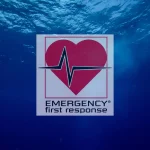EFR Course in Komodo
Time to learn how to Take care
Emergency first response course: Primary & Secondary care
🛟 Your Rescue Diver Journey: Empowering, Practical & Life-Saving
The PADI Rescue Diver Program is thoughtfully divided into three immersive parts: 🧠 Theory, 🏊 Practical Training, and 🎭 Realistic Scenarios.
Each session includes a debriefing and hands-on practice with your instructor. Step by step, you'll learn how to assess risks, manage stress, and respond efficiently to challenging dive situations — while ensuring your own safety.
❤️🔥 Emergency First Response (EFR) – Your Lifesaving Toolkit
Emergency First Response (EFR) is your foundation for safety and confidence. This training covers Primary Care (CPR), Secondary Care (First Aid), AED use, and Emergency Oxygen Administration.
You’ll gain skills to handle emergencies involving adults, children, and infants. Whether you’re becoming a PADI Divemaster or just want to be ready for real-life emergencies, EFR empowers you to take action when it matters most.
✅ Primary Care (CPR)
Learn how to respond to life-threatening emergencies like:
- ❌ No breathing or heartbeat
- ⚠️ Spinal injuries or shock
- 🩸 Serious bleeding
Practice 8 essential skills, including CPR, barrier use, and patient monitoring until help arrives.
✅ Secondary Care (First Aid)
When help is delayed, your actions matter most. You’ll learn to:
- 🩺 Assess injuries and illnesses
- 💡 Ease pain and reduce further harm
- 🩹 Apply bandages and splints
✅ Care for Children
Designed for caregivers or anyone working with kids, this module covers:
- 🧒 Pediatric CPR & First Aid
- 🍼 Infant care techniques
- 🚼 Emergency response for children
✅ CPR & AED
Master the use of an Automated External Defibrillator (AED) in emergency situations. This training is often required for:
- 🏢 Workplace safety compliance
- 🚑 Public safety responders
- 🫀 General emergency preparedness
🧾 What You’ll Master
- ✔️ Risk evaluation & use of protective barriers
- ✔️ Injury assessment & rescue breathing
- ✔️ CPR (Cardio Pulmonary Resuscitation)
- ✔️ Bleeding and shock management
- ✔️ Managing choking emergencies
- ✔️ Applying bandages and splints
The EFR Course Details
PADI EFR Diver Course prepares you to deal with dive emergencies, both minor and major. Through knowledge development and hands-on scenarios, you’ll learn how to recognize and respond to real-life dive situations.
Theory takes place in our classroom at Dragon Dive Komodo. Practical sessions are done in our pool and the open ocean around Komodo National Park.
Prerequisites
- Theoretical classes included
- Minimum age: 15 years (or 12 for Junior Rescue)
- Minimum certification: Advanced Open Water OR equivalent (with navigation dive)
- Emergency First Response within the last 24 months







